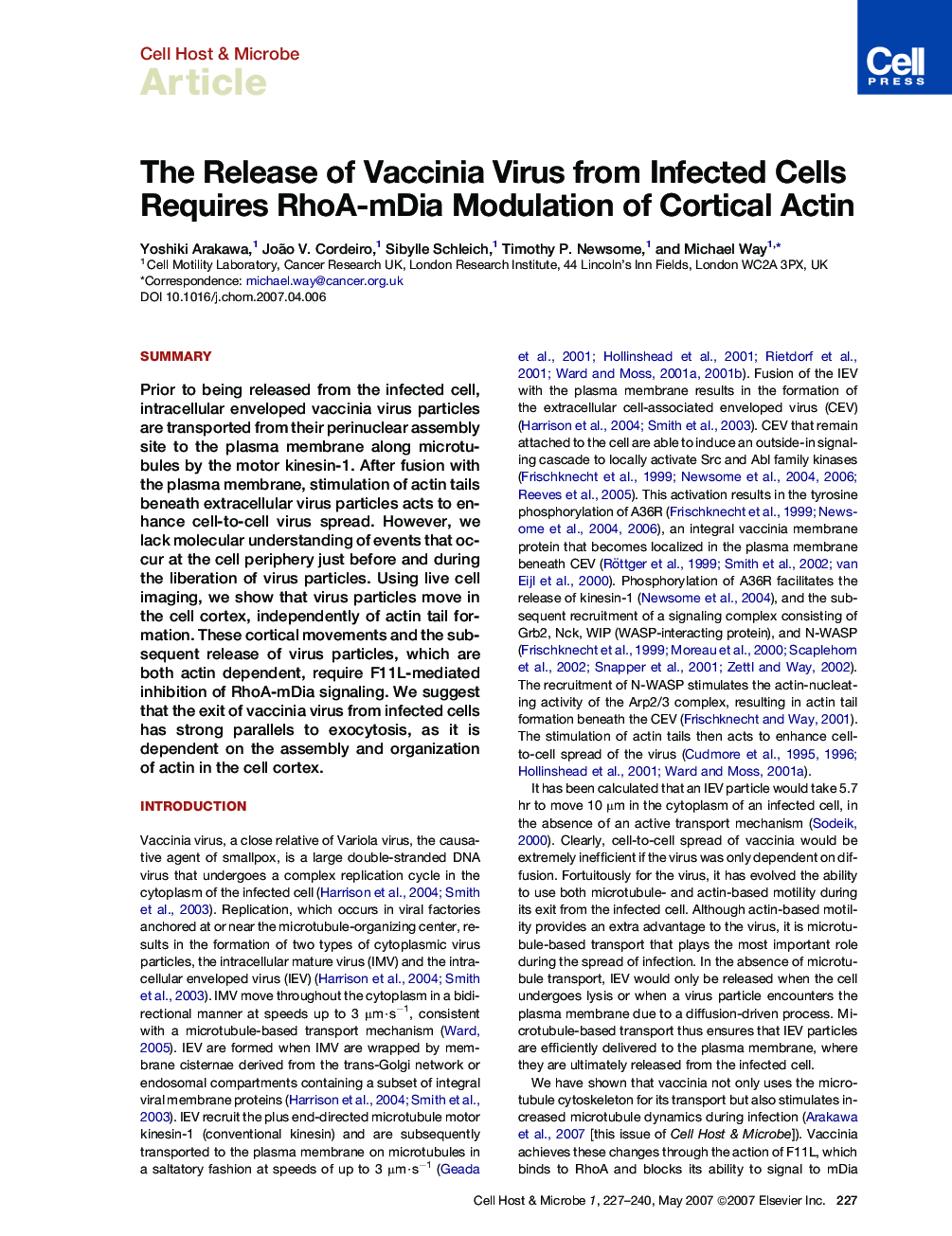| Article ID | Journal | Published Year | Pages | File Type |
|---|---|---|---|---|
| 4361858 | Cell Host & Microbe | 2007 | 14 Pages |
SummaryPrior to being released from the infected cell, intracellular enveloped vaccinia virus particles are transported from their perinuclear assembly site to the plasma membrane along microtubules by the motor kinesin-1. After fusion with the plasma membrane, stimulation of actin tails beneath extracellular virus particles acts to enhance cell-to-cell virus spread. However, we lack molecular understanding of events that occur at the cell periphery just before and during the liberation of virus particles. Using live cell imaging, we show that virus particles move in the cell cortex, independently of actin tail formation. These cortical movements and the subsequent release of virus particles, which are both actin dependent, require F11L-mediated inhibition of RhoA-mDia signaling. We suggest that the exit of vaccinia virus from infected cells has strong parallels to exocytosis, as it is dependent on the assembly and organization of actin in the cell cortex.
